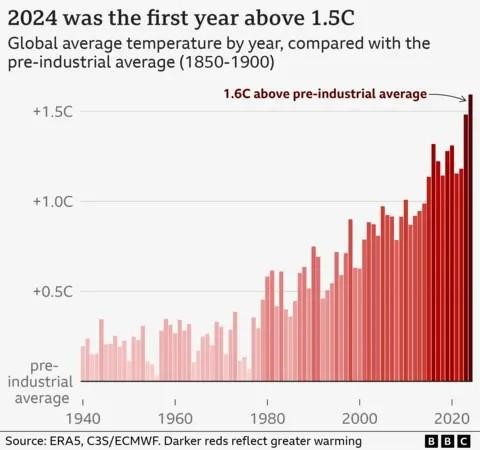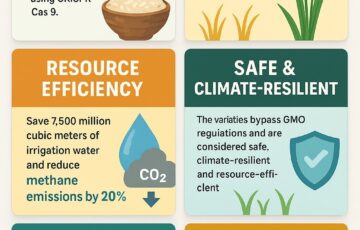2024 Breaks 1.5°C Threshold, Warming Trends Accelerate
Why in the news?
2024 has officially surpassed the 1.5°C global warming threshold, marking a significant milestone in climate change. With rising emissions, future temperatures are expected to exceed this limit more frequently, highlighting urgent climate action needs.
2024: The First Year to Breach 1.5°C Threshold
- Temperature Breach Confirmed:
- 2024 recorded a 6°C rise in global average surface temperature above pre-industrial levels, confirmed by the Copernicus Climate Change Service (ECMWF) and WMO datasets.
- The threshold breach aligns with warming trends predicted to occur before 2027.
- Paris Agreement Context:
- The 5°C target refers to long-term averages, not annual or monthly temperatures.
- The breach does not signify the target is irreversibly missed, but the increasing warming rate (~0.2°C per decade) suggests it could be breached by the 2030s.
Factors Contributing to 2023–2024 Warming
- Exceptional Warm Years:
- 2024 surpassed 2023 as the warmest year; both years were marked by record-breaking temperature events.
- Unlike the strong El Niño of 2016, milder El Niño conditions, solar maximum phases, and reduced sulphur dioxide emissions contributed to the unusual warming.
- Potential Influences:
- Other oceanic phenomena and a volcanic eruption near Tonga in 2022 may have amplified warming.
- Solar activity during the Sun’s magnetic pole flip phase also likely played a role.
Future Outlook
- 2025 and Beyond:
- While 2025 is unlikely to be the warmest year, it will likely fall within recent warming ranges of 1–1.4°C above pre-industrial levels.
- WMO forecasts suggest a 50% chance of exceeding the 5°C five-year average before 2028, emphasizing the urgent need for climate action.
Sources Referred:
PIB, The Hindu, Indian Express, Hindustan Times






